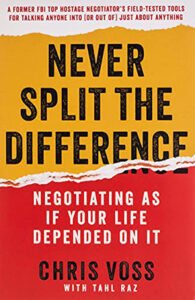|

|
Never Split the Difference:
…if you can get the other side to drop their unbelief, you can slowly work them to your point of view on the back of their energy…
|
149 |
|

|
Never Split the Difference:
Our job as persuaders is easier than we think. It’s not to get others believing what we say. It’s just to stop them unbelieving. Once we achieve that, the game’s half won.
|
150 |
|

|
Never Split the Difference:
Giving your counterpart the illusion of control by asking calibrated questions – by asking for help – is one of the most powerful tools for suspending unbelief.
|
150 |
|

|
Never Split the Difference:
He who has learned to disagree without being disagreeable has discovered the most valuable secret of negotiation. – Robert Estabrook
|
151 |
|
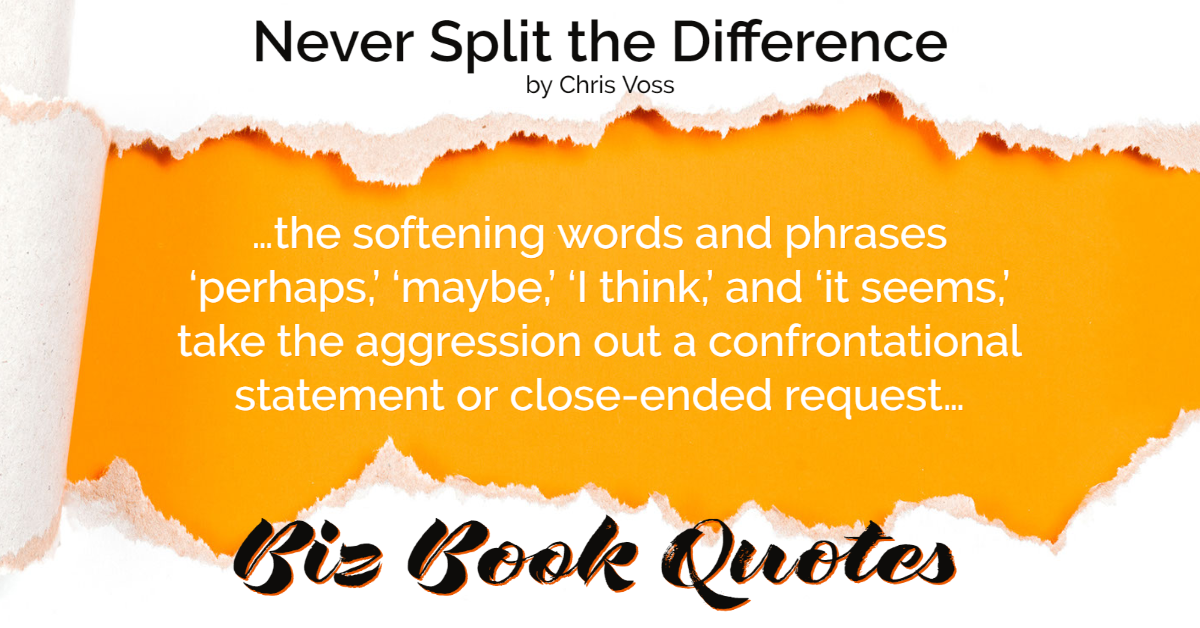
|
Never Split the Difference:
…the softening words and phrases ‘perhaps,’ ‘maybe,’ ‘I think,’ and ‘it seems,’ take the aggression out a confrontational statement or close-ended request…
|
152 |
|

|
Never Split the Difference:
Calibrated questions have the power to educate your counterpart on what the problem is rather than causing conflict by telling them what the problem is.
|
153 |
|

|
Never Split the Difference:
Regardless of what language the word ‘why’ is translated into, it’s accusatory. There are very rare moments when this is to your advantage.
|
153 |
|
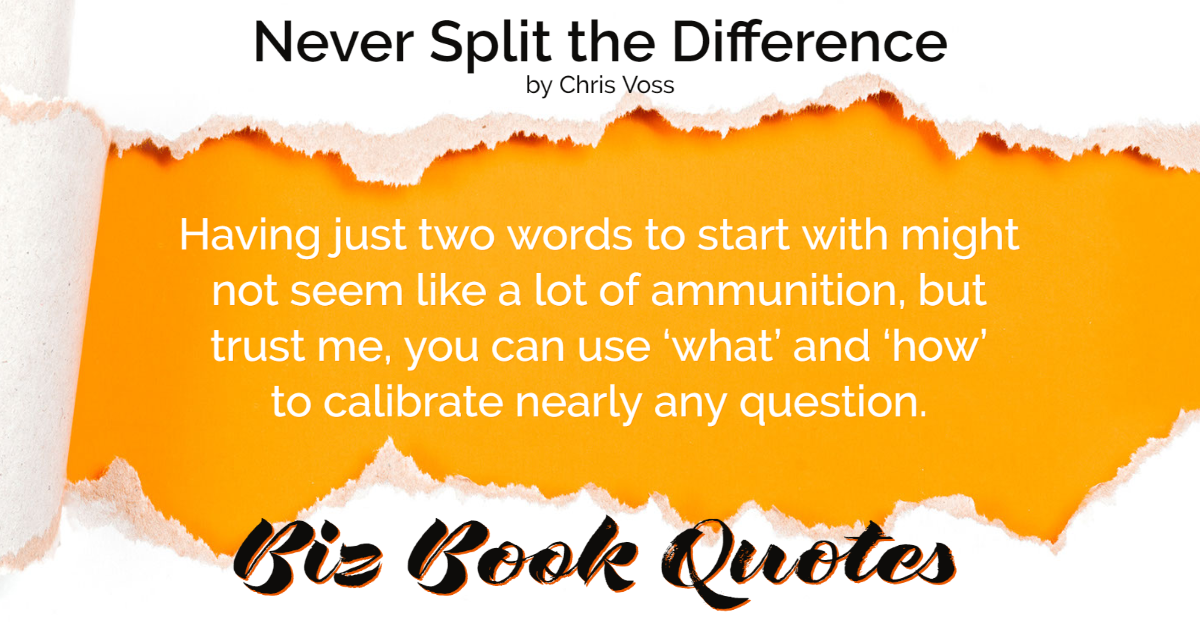
|
Never Split the Difference:
Having just two words to start with might not seem like a lot of ammunition, but trust me, you can use ‘what’ and ‘how’ to calibrate nearly any question.
|
154 |
|
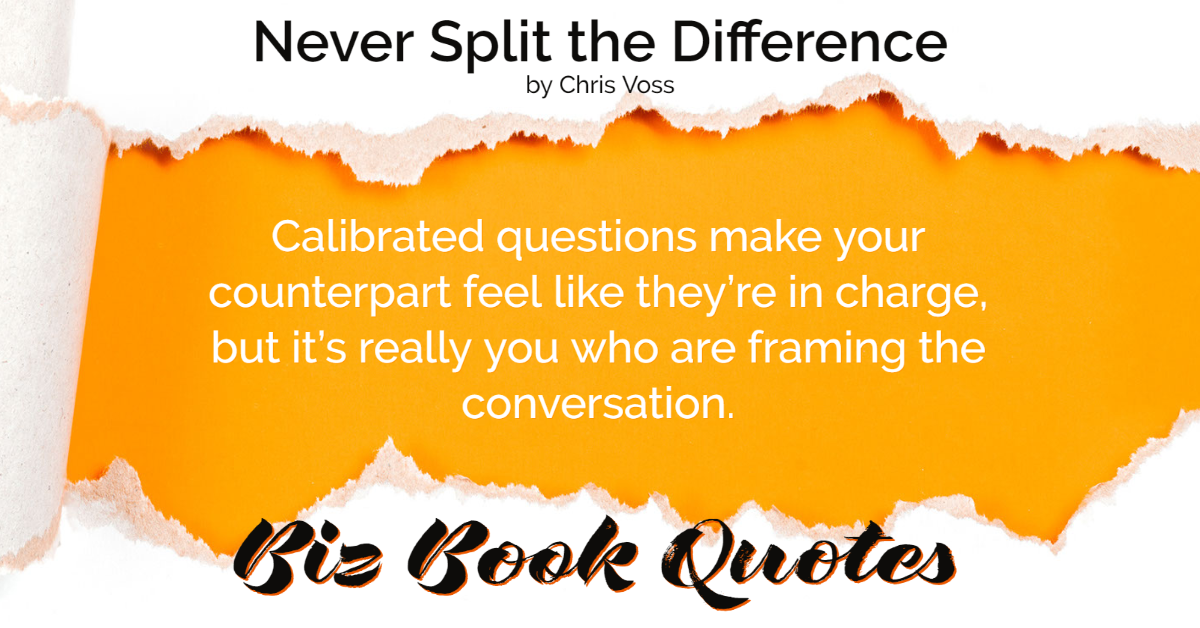
|
Never Split the Difference:
Calibrated questions make your counterpart feel like they’re in charge, but it’s really you who are framing the conversation.
|
155 |
|
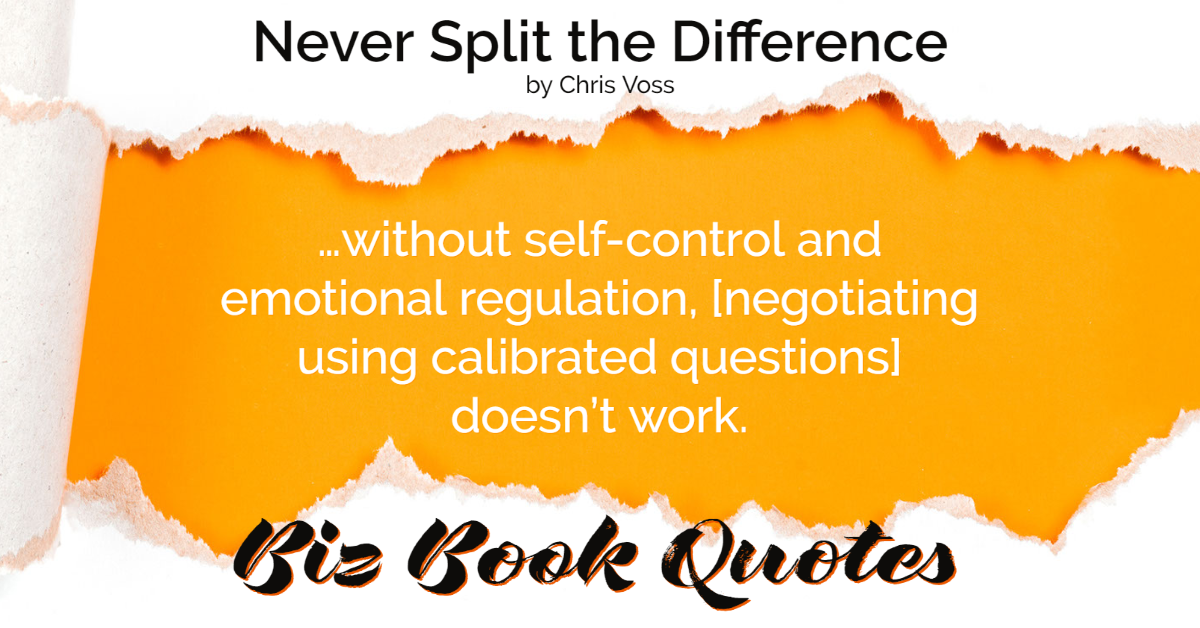
|
Never Split the Difference:
…without self-control and emotional regulation, [negotiating using calibrated questions] doesn’t work.
|
156 |
